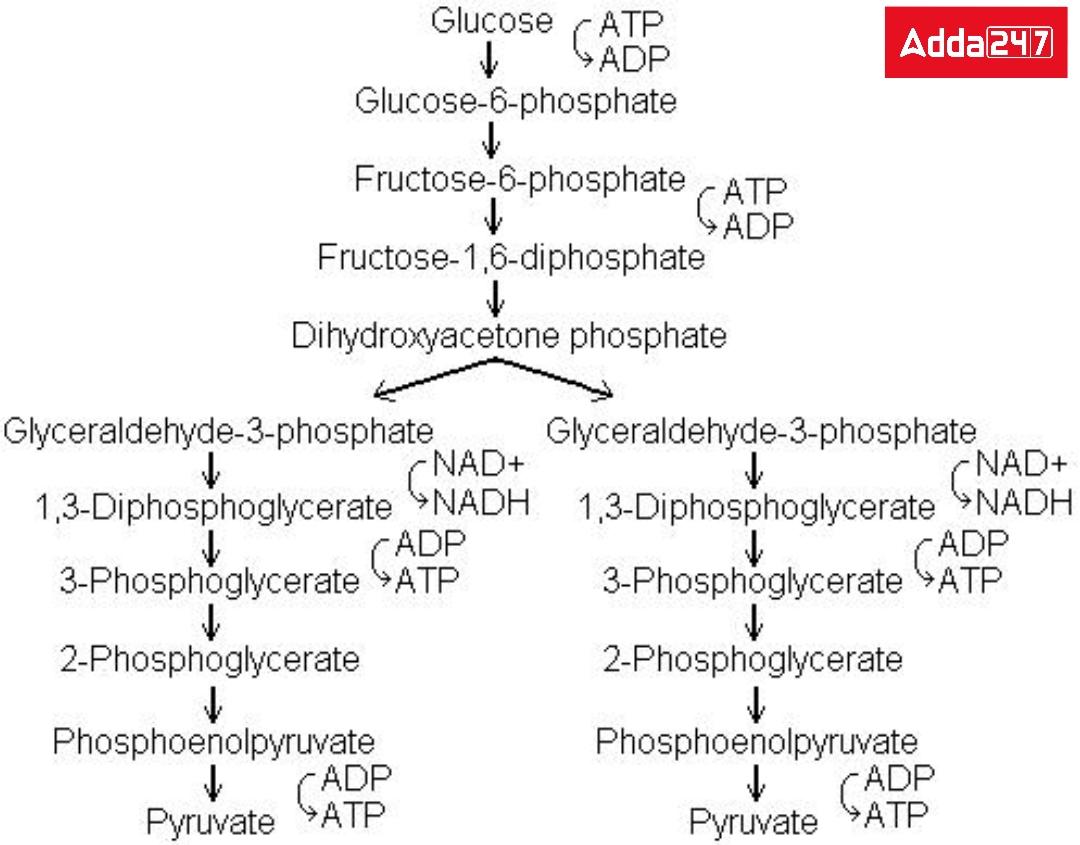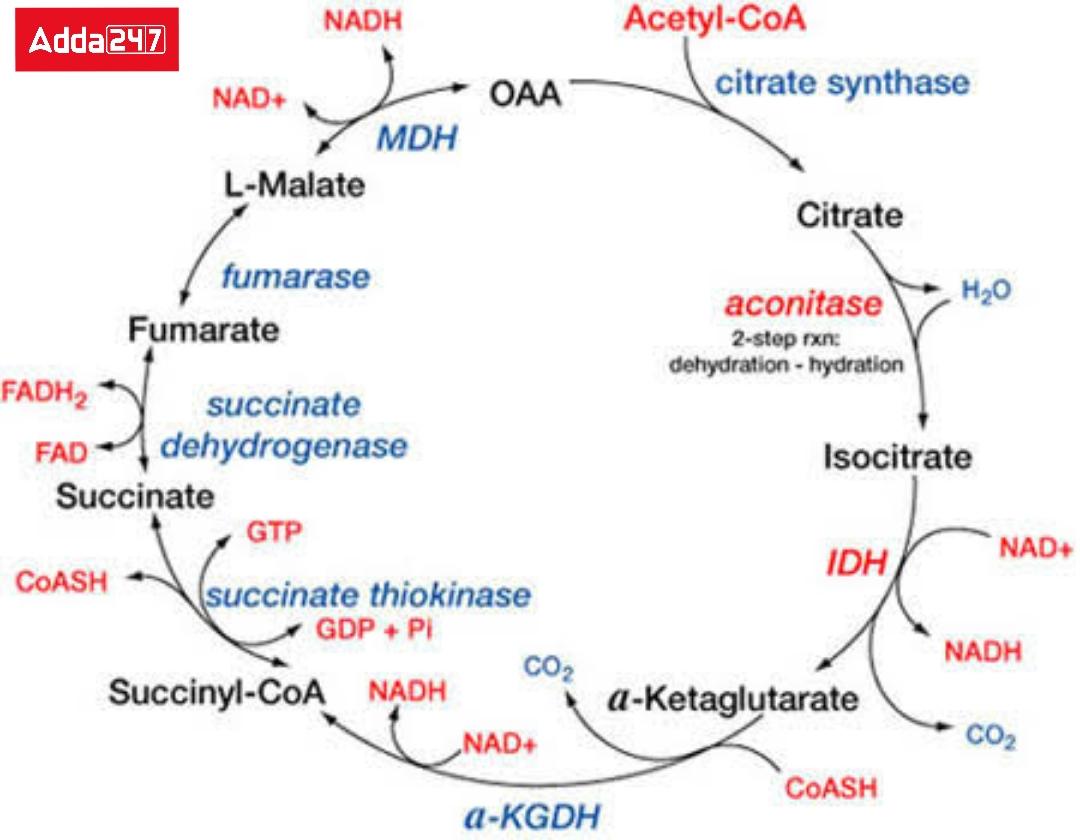Respiration Definition
Respiration is one of the most important biological phenomena in living organisms. Every organism requires energy to carry out various biological functions properly. The source of this energy in the organism is food. But how does our body extract energy from food? The answer is Respiration.
The continuous and regular oxidation of cellular food materials such as carbohydrates, lipids, and proteins generates this energy such as carbohydrates, lipids, and proteins. All biological processes constantly utilize this energy, which is only momentarily stored in cells as ATP (chemical energy). Respiration is the physiological process in which water and carbon dioxide are discharged as waste products while cellular organic molecules are oxidized to form energy components (ATP).
In this article, we will get a complete idea of Respiration. how it processes, its types, and many more. So, Let’s start.
Respiration in Human Beings Class 10
To perform metabolic functions every organism needs energy. The biochemical process in which digested organic food material is oxidized and food protein energy is converted into kinetic or thermal energy and released which is used in various metabolic processes and carbon dioxide and water are produced, is called respiration.
Respiration often requires the presence of oxygen and the byproduct which is carbon dioxide, typically expelled from the body. Since it is toxic to cells. Green plant cells require CO for photosynthesis during the day. The ATP catalyst breaks down the water generated, which is still partially present in the cell. Biological processes include the release of energy that is then utilized. Each and every living cell continuously breathes.
Cellular Respiration
Respiration is performed in every living cell at all times. Glycolysis, the first stage of respiration, takes place in the cytoplasm of the cell, and the Krebs cycle, the second stage, takes place in the mitochondria of the cytoplasm. Oxidation of cellular food (respiration material) releases energy that is then stored as ATP.
Later, all of an organism’s metabolic processes are carried out using ATP.
Respiration Raw materials
Mainly Glucose and water are oxidized in the process of Respiration to produce Energy or ATP
Raw materials used in Respiration- Glucose (C6H12O6) and Water.
Products are formed in Respiration- Water, carbon dioxide, Energy
Types of Respiration
In Organisms mainly three types of Respiration are found.
1) Aerobic respiration
2) Anaerobic respiration
3) Fermentation
Aerobic Respiration
Aerobic respiration is the metabolic process by which respiratory components (mostly glucose) in aerobic cells completely oxidize in the presence of oxygen to produce carbon dioxide and water as well as the complete release of kinetic energy. Respiration is a function of every aerobic organism.
Glycolysis, the first stage of this process, occurs in the cytoplasm, and the Krebs cycle and the electron transport system, the second and third stages, respectively, occur in the mitochondria.
Anaerobic Respiration
Anaerobic Respiration is the process by which the respiring material of the organism partially releases the kinetic energy stored within it by incompletely oxidizing oxygenated inorganic molecules with oxygen without free oxygen to generate carbon dioxide, water, and oxide compounds. Anaerobic parasites (such as the protozoa Monocystis and the worm Ascaris), fungi, and different bacteria all engage in anaerobic respiration (Nitrobacter).
Fermentation
Louis Pasteur was the first to explain the fermentation process in 1857. The biological process known as fermentation is whereby respiratory substances are oxidized in anaerobic organisms in the absence of oxygen under the influence of specific stimuli, leading to a partial release of energy and the production of lactic acid, ethyl alcohol, or other organic compounds such as byproducts.
On the basis of the substance produced, the detection process can be mainly divided into two, namely, Alcohol Fermentation and Lactic acid Fermentation.
Alcohol fermentation
Alcohol Fermentation is the process by which yeast-like fungi cause partial oxidation of glucose in the absence of oxygen to ethyl alcohol. As it produces carbon dioxide and a small amount of energy.
Lactic acid Fermentation
The process of respiration in which glucose-like respiratory products are partially oxidized in the absence of oxygen to produce lactic acid and a small amount of energy.
Alcohol Fermentation produces ethyl alcohol, carbon dioxide, and 50 kcal of energy. Another lactic acid Fermentation produces lactic acid and 36 kcal energy.
Respiration Process with Diagrams
In respiration, Glucose is completely oxidized by various enzyme-dependent reactions to produce carbon dioxide, water, and energy. The respiration is completed in 4 stages are—
1. Glycolysis
2. Oxidation of pyruvic acid
3. Kerbs cycle
4. Electron transport system
Let’s learn about those stages of respiration one by one
Glycolysis
This is the first stage of respiration, glucose is partially oxidized in the cell cytoplasm to two molecules of pyruvic acid. The reactions of glycolysis are oxygen neutral.
Glycolysis is also known as EMP pathway (Embden, Meyerhof, Parnas Pathway) according to names of the scientists.

Oxidation of pyruvic acid
Pyruvic acid is oxidized to 2-carbon acetyl CoA after entering the mitochondria by the elimination of hydrogen. Due to the removal of carbon dioxide, this process is also known as a decarboxylation reaction. Pyruvic acid is simultaneously oxidized and decarboxylated in this reaction, which is why it is known as oxy-decarboxylation of pyruvic acid.
Krebs cycle
The process in which the acetyl-CoA produced in the living body is oxidized in a cyclical way through the production of various organic acids with the help of different catalysts in the mitochondria to produce water, carbon dioxide, oxidized hydrogen carriers and oxidized co-stimulators NADH, FADH, is called the Krebs cycle or tricarboxylic acid cycle (TCA Cycle).
The first product of this cycle is called citric acid. This cycle is called the citric acid cycle. Because citric acid has three carboxyl groups (-COOH), it is also called the tricarboxylic acid cycle (Tricarboxylic Acid Cycle or TCA cycle).

Electron transport system
Oxidized NAD or FAD originating from the stages of the Krebs cycle is oxidized through the electron transport chain and finally combines with H’ of oxidized compounds and transported oxygen to produce water. The energy released during the electron transfer joins ADP and Pi to form ATP molecules.
Respiration in Plants
Through the process of cellular respiration, all green plants generate energy to perform all the metabolic ac. In this process, energy is formed from the oxidization of nutrients which is used for various cellular functions. Over the course of their lifetime, plants perform respiration both during the day and at night.
O2 + C6 H12O6 –> C02 + H2O + Energy [presence of Enzyme]
Respiration Equation
In Respiration cellular food materials(carbohydrates, lipids, and proteins) oxidized in presence of oxygen or without oxygen and generates energy. The produced energy is stored as ATP which is used in various cellular activities.
The general equation of Respiration is
Oxygen+ Glucose = Carbon dioxide + Water +Energy [presence of Enzyme]
Equation of Aerobic Respiration
C6 H12O6 + 6O2 = 6C02 + 6H2O + 686 Kcal Energy
Equation of Anaerobic Respiration
C6 H12O6 +12NO3 = 6C02 + 6H2O + 12 NO2+ 50 Kcal Energy
Respiration Practice Questions
Respiration in Hindi
श्वसन परिभाषा: जीवित जीवों में श्वसन सबसे महत्वपूर्ण जैविक घटनाओं में से एक है। प्रत्येक जीव को विभिन्न जैविक क्रियाओं को ठीक से करने के लिए ऊर्जा की आवश्यकता होती है। जीव में इस ऊर्जा का स्रोत भोजन है। लेकिन हमारा शरीर भोजन से ऊर्जा कैसे निकालता है? उत्तर श्वसन है।
सेलुलर खाद्य सामग्री जैसे कार्बोहाइड्रेट, लिपिड और प्रोटीन के निरंतर और नियमित ऑक्सीकरण से यह ऊर्जा जैसे कार्बोहाइड्रेट, लिपिड और प्रोटीन उत्पन्न होती है। सभी जैविक प्रक्रियाएं इस ऊर्जा का लगातार उपयोग करती हैं, जो केवल क्षणिक रूप से कोशिकाओं में एटीपी (रासायनिक ऊर्जा) के रूप में संग्रहीत होती है। श्वसन एक शारीरिक प्रक्रिया है जिसमें पानी और कार्बन डाइऑक्साइड को अपशिष्ट उत्पादों के रूप में छोड़ा जाता है जबकि सेलुलर कार्बनिक अणुओं को ऊर्जा घटकों (एटीपी) बनाने के लिए ऑक्सीकरण किया जाता है।
इस लेख में हम श्वसन के बारे में पूरी जानकारी प्राप्त करेंगे। यह कैसे प्रोसेस करता है, इसके प्रकार, और भी बहुत कुछ। चलिए, शुरू करते हैं।
मनुष्य में श्वसन
चयापचय कार्यों को करने के लिए प्रत्येक जीव को ऊर्जा की आवश्यकता होती है। जैव रासायनिक प्रक्रिया जिसमें पचे हुए कार्बनिक खाद्य पदार्थ का ऑक्सीकरण होता है और खाद्य प्रोटीन ऊर्जा को गतिज या तापीय ऊर्जा में परिवर्तित किया जाता है और जारी किया जाता है जिसका उपयोग विभिन्न चयापचय प्रक्रियाओं में किया जाता है और कार्बन डाइऑक्साइड और पानी का उत्पादन होता है, श्वसन कहलाता है।
श्वसन के लिए अक्सर ऑक्सीजन और उपोत्पाद की उपस्थिति की आवश्यकता होती है जो कार्बन डाइऑक्साइड है, जिसे आमतौर पर शरीर से बाहर निकाल दिया जाता है। चूंकि यह कोशिकाओं के लिए विषैला होता है। हरे पौधों की कोशिकाओं को दिन में प्रकाश संश्लेषण के लिए CO की आवश्यकता होती है। एटीपी उत्प्रेरक उत्पन्न पानी को तोड़ देता है, जो अभी भी आंशिक रूप से कोशिका में मौजूद है। जैविक प्रक्रियाओं में ऊर्जा की रिहाई शामिल होती है जिसका उपयोग तब किया जाता है। प्रत्येक जीवित कोशिका लगातार सांस लेती है।
कोशिकीय श्वसन
प्रत्येक जीवित कोशिका में हर समय श्वसन होता है। ग्लाइकोलाइसिस, श्वसन का पहला चरण, कोशिका के कोशिका द्रव्य में होता है, और क्रेब्स चक्र, दूसरा चरण, कोशिका द्रव्य के माइटोकॉन्ड्रिया में होता है। सेलुलर भोजन (श्वसन सामग्री) के ऑक्सीकरण से ऊर्जा निकलती है जिसे तब एटीपी के रूप में संग्रहीत किया जाता है।
बाद में, किसी जीव की सभी चयापचय प्रक्रियाओं को एटीपी का उपयोग करके किया जाता है।
श्वसन कच्चा माल
मुख्य रूप से ग्लूकोज और पानी को ऊर्जा या एटीपी उत्पन्न करने के लिए श्वसन की प्रक्रिया में ऑक्सीकृत किया जाता है
श्वसन में प्रयुक्त कच्चा माल- ग्लूकोज (C6H12O6) और पानी।
उत्पाद श्वसन में बनते हैं- जल, कार्बन डाइऑक्साइड, ऊर्जा
श्वसन के प्रकार
जीवों में मुख्यतः तीन प्रकार के श्वसन पाए जाते हैं।
1) एरोबिक श्वसन
2) अवायवीय श्वसन
3) किण्वन
Respiration Class 10: FAQs
Q. What do you mean by Respiration?
To perform metabolic functions every organism needs energy. The biochemical process in which digested organic food material is oxidized and food protein energy is converted into kinetic or thermal energy and released which is used in various metabolic processes and carbon dioxide and water are produced, is called respiration.
Q, What is aerobic Respiration?
Aerobic respiration is the metabolic process by which respiratory components (mostly glucose) in aerobic cells completely oxidize in the presence of oxygen to produce carbon dioxide and water as well as the complete release of kinetic energy. Respiration is a function of every aerobic organism.
Glycolysis, the first stage of this process, occurs in the cytoplasm, and the Krebs cycle and the electron transport system, the second and third stages, respectively, occur in the mitochondria.
Q, What are the stages of the Respiration process?
In respiration, Glucose is completely oxidized by various enzyme-dependent reactions to produce carbon dioxide, water, and energy. The respiration is completed in 4 stages are—
1. Glycolysis
2. Oxidation of pyruvic acid
3. Kerbs cycle
4. Electron transport system
Q. What are the raw materials and the products of the respiration process?
Mainly Glucose and water are oxidized in the process of Respiration to produce Energy or ATP
Raw materials used in Respiration- Glucose (C6H12O6) and Water.
Products are formed in Respiration- Water, carbon dioxide, Energy
Q, What is Kerb’s cycle?
The process in which the acetyl-CoA produced in the living body is oxidized in a cyclical way through the production of various organic acids with the help of different catalysts in the mitochondria to produce water, carbon dioxide, oxidized hydrogen carriers and oxidized co-stimulators NADH, FADH, is called the Krebs cycle or tricarboxylic acid cycle (TCA Cycle).









 CUET UG Final Answer Key 2025 Revised, D...
CUET UG Final Answer Key 2025 Revised, D...
 DU Cut off 2025, Delhi University Expect...
DU Cut off 2025, Delhi University Expect...
 OUAT Result 2025 OUT @ouat.nic.in: Check...
OUAT Result 2025 OUT @ouat.nic.in: Check...









